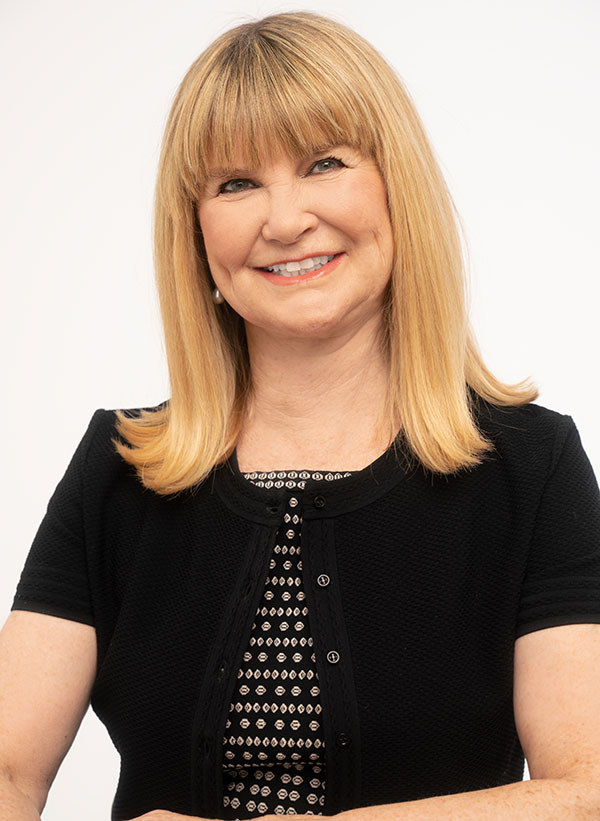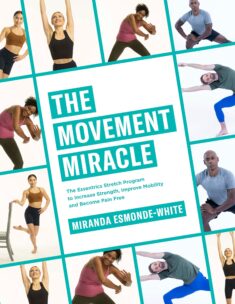Miranda Esmonde-White on Her New Book, ‘The Movement Miracle’ and Feeling Young Through Gentle Exercise

Author and fitness trainer Miranda Esmonde-White says that regular gentle exercise — including plenty of stretching — can improve everything from functional mobility to chronic pain. Photo: The Good Brigade/Getty Images
The promise of Miranda Esmonde-White’s latest book, The Movement Miracle (March 14), is pretty enticing: only 25 minutes a day of gentle movement, following the author’s Essentrics exercises, “will radically change and strengthen your body, relieve you of pain, replenish your energy and keep you young, no matter your age.”
Almost sounds too good to be true.
But this isn’t Esmonde-White’s first rodeo. There’s some cred behind that claim.
Her first book, Aging Backwards, is a New York Times and Globe and Mail bestseller, and inspired an award-winning doc of the same name. Professional athletes and Olympians count themselves among her clients. And then there’s Classical Stretch, her PBS series that’s been the network’s No. 1 fitness show for more than 20 years.
So, we put our questions to the 73-year-old classically trained ballerina (and National Ballet of Canada alum) turned fitness trainer-TV host-author about the new book and its magic pill-sounding promise.
What inspired this latest book?
After 25 years of developing and perfecting Essentrics, I wanted to write a book that would bring all my knowledge and experience together to redefine stretching and give people a new and improved way to get fit and stay mobile without injury.
Most often, stretching is thought of as static, where you target one individual muscle at a time — this type of stretching doesn’t work. The only way to achieve the ultimate results of what stretching can bring, i.e., decrease stiffness, improve mobility, feel more youthful, etc., is to do full, range of motion exercises that combine dynamic stretching and strengthening.
My other books focus on aging and how to prevent it; this new book is different. It’s the perfect “go-to” reference for anyone interested in stretching and optimal mobility. It educates readers and will help them gain a deeper understanding of their body and its needs in terms of movement.
For someone who’s never heard of Essentrics, how would you describe it?
Essentrics combines stretching and strengthening simultaneously, using slow to medium-paced movements, which makes them easy to follow at any age or level. They are focused on increasing the range of motion of every joint, combined with strengthening every muscle using your own body as a weight — leaving you feeling energetic, strong and able to move with ease.
Can someone with limited mobility practise it?
Yes, they can. This is a mobility book for all levels and ages. My main recommendation for those with limited mobility is to start slow, never push beyond your comfort zone and do the routines on a regular basis.

In the book, you say that Essentrics can enhance functional mobility. What is that, and how does the routine help it?
Functional mobility is something we all need no matter our age. For example, getting on and off a chair, climbing stairs, reaching into high and low cupboards, getting your shoes on, gardening, etc.
In order to have functional mobility, we need strength — but strength alone will not do it. Strength needs to be matched with an equal amount of flexibility and range of motion, which is the definition of an Essentrics workout. Stretching alone will not provide functional mobility.
You dedicated a whole section of the book to chronic pain, what mistakes do people most often make in trying to alleviate it?
The most common mistakes I see are either one) doing nothing and over-protecting your injury, or two) powering through the chronic pain and injury, hoping it will go away. Both are the kiss of death when it comes to healing.
If your doctor has told you that you can move, then I recommend being gentle as my greatest piece of advice. Doing the full-body exercises in a relaxed and gentle mode. Gentle movement is the best way to heal. People speak of injuries they had in their teens and 20s that continue to irk them even in their 50s and 60s.
It’s not the first time we’ve heard it, but you also write about the importance of posture. Why is it so important? And, what’s an exercise that can help improve it?
Good posture is when your body is able to stand straight and move with ease in all of your joints throughout the day. If you stand straight but are stiff and look like the tin man while you move, this is not good posture. Having good posture therefore aligns the joints to prevent and relieve joint pain and damage, making you feel and look younger, have more energy and healthier organs.
One exercise from the book: reaching arms above the head. [Raise your arms above your head, keeping them beside your ears. Relax your shoulders and
lift your arms higher. Timing: 4 seconds.] There is a whole section on posture in the book.
How can the book benefit an older reader, whether they’re an ‘exerciser’ or not?
Knowledge is power when it comes to aging well. This book will help older adults understand the mechanics of their body and why they need a range of motion workout that works both flexibility and strength simultaneously, without stressing their joints.
It will help them understand that developing common signs of aging, such as stiffness, chronic pain and lower energy, are not inevitable and that there are proven ways to counteract these signs. I’ve included several specific routines for older adults designed to address these concerns and empower them to regain control over their physical well-being.
Learning about proper alignment for your head, neck, back, as well as feet positioning is also key for older adults to understand and implement, in order to avoid poor posture, injury and unnecessary surgeries as they age.
This Q&A has been edited for length and clarity.
RELATED:
Music and Movement: How Dancing Helps to Ease Symptoms of Parkinson’s Disease
